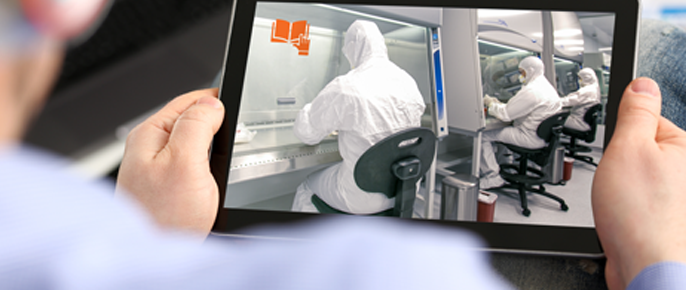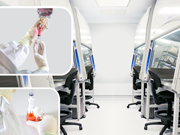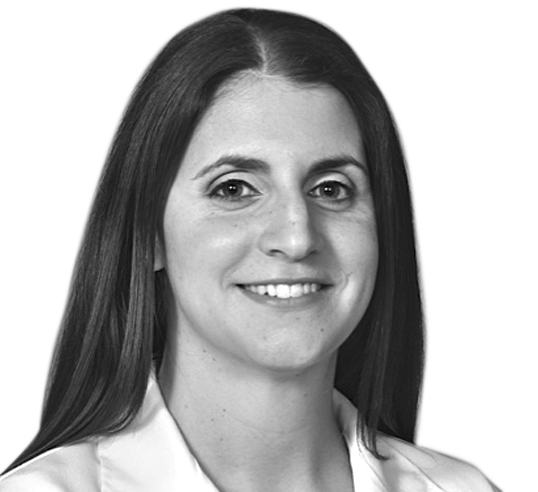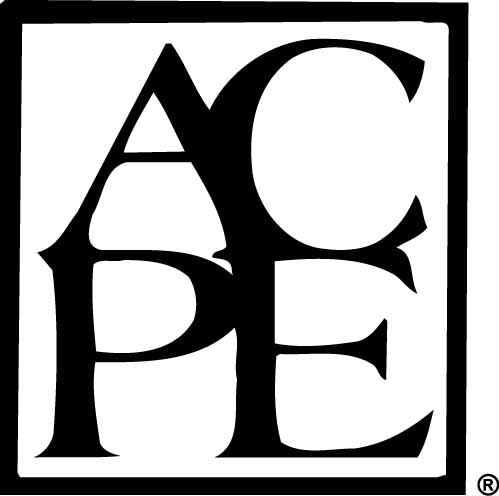Achieving Best Practices: Sterile Compounding | Home Study

| This activity serves as a prerequisite to the live activity, Achieving Best Practices: Sterile Compounding. While attendance at the live event is not mandatory to receive home study CE credit, participation in the live event will afford the participant an opportunity to practically apply the activity’s core concepts and to practice, under expert supervision, manual dexterity-related aseptic techniques and work with a broad range of technologies specific to sterile compounding. |  |
Please note: If you are attending the live event, your home study can be accessed by navigating to the course page for your specific live event location & date. The version of the home study on this page is for those who are not attending a live event.
The following eight modules represents our foundational Activity series affording you everything you need to implement a sterile compounding practice or operation based on best practice principles for six different facility settings; Category 1 and 2 for non-hazardous and hazardous drug handling and compounding. The two Category 1 facilities would be situated in a segregated compounding area and room. The four Category 2 & 3 facilities would be in two-room or three-room cleanroom suites.
The Drug Quality and Security Act (DQSA) and the subsequent Guidance for Industry as published by the Food and Drug Administration along with regulations originating from the Occupational Health and Safety Administration (OSHA), Center for Disease Control and Prevention (CDC) and Environmental Protection Agency (EPA) establish the regulatory framework for sterile compounding. The United States Pharmacopeia (USP) General Chapters 797, 800 and referenced supplemental chapters establish the standards of practice for sterile compounding. Combined, these regulations and standards establish the foundation upon which a sterile compounding practice is defined, and this module is built.
Objectives for Pharmacists
After completing this module, the pharmacist will be able to:
- Discuss the origin, implication and mandate of the DQSA
- Discuss policy that is common to, and discriminates, the Traditional Compounder from the Outsourcing Facility
- Explain Federal regulations as presented by OSHA, the CDC and EPA
- Distinguish between Category 1 and Category 2 compounded sterile preparations as defined by the USP
- Distinguish between non-hazardous and hazardous drug handling
Objectives for Pharmacy Technicians
After completing this module, the pharmacy technician will be able to:
- Discuss the origin, implication and mandate of the DQSA
- Discuss policy that is common to, and discriminates, the Traditional Compounder from the Outsourcing Facility
- List Federal regulations as presented by OSHA, the CDC and EPA
- Define Category 1 and Category 2 compounded sterile preparations as outlined by the USP
- Define non-hazardous and hazardous drug handling
The infrastructure for four management programs (i.e., personnel, environmental, inventory control and compounded sterile preparation) allows the participant to relate elements of qualification, quality assurance and quality control in an efficient and effective manner that well packages regulations and standards of practice. In support of these management programs, this module concludes with an example of a well-designed standard operating procedure displaying its own infrastructure, criteria for assessing performance, risk assessment tools providing a formidable approach to risk mitigation and finally a set of well-conceived underlying principles for sterile compounding.
Objectives for Pharmacists
After completing this module, the pharmacist will be able to:
- Summarize the purpose and intent for each of four comprehensive practice management programs
- Discriminate, and build relationships, between qualification, quality assurance and quality control
- Describe the infrastructure of a standard operating procedure system and its integration into management programs
- Explain the purpose and intent of the subsections of well designed standard operating procedures
- Apply methods to assess the efficacy, reliability and validity of performance measures
- Apply the combined Ishikawa and Failure Mode and Effects Analysis risk strategies to sterile compounding
- Apply corrective action and preventive action (CAPA) to identified potential and demonstrated risk
- Learn a series of underlying principles applicable to a sterile compounding practice
Objectives for Pharmacy Technicians
After completing this module, the pharmacy technician will be able to:
- Describe the purpose and intent for each of four comprehensive practice management programs
- Identify, and build relationships, between qualification, quality assurance and quality control requirements
- Describe the infrastructure of a standard operating procedure system and its integration into management programs
- Explain the purpose and intent of the subsections of well designed standard operating procedures
- Discuss methods to assess the efficacy, reliability and validity of performance measures
- Apply the combined Ishikawa and Failure Mode and Effects Analysis risk strategies to sterile compounding
- Apply corrective action and preventive action (CAPA) to identified potential and demonstrated risk
- Learn a series of underlying principles applicable to a sterile compounding practice
The personnel management program discriminates roles and responsibilities of personnel types, and then details competency requirements, ongoing qualification testing and compliance requirements for employing a continuous quality improvement approach while incorporating principles of adult education.
Objectives for Pharmacists
After completing this module, the pharmacist will be able to:
- Distinguish roles and responsibilities of the designated person, compounding and non-compounding personnel
- Review, and apply in practice, qualification, QA and QC competency and compliance indicators
- Recall QA and QC procedures for performance testing (i.e., gloved fingertip and thumb sampling and media-fill test)
- Summarize requirements leading to a robust media-fill test design
- Describe a hazardous drug communication program, which includes medical surveillance
- Employ strategies to optimize overall personnel performance
Objectives for Pharmacy Technicians
After completing this module, the pharmacy technician will be able to:
- Summarize roles and responsibilities of the designated person, compounding and non-compounding personnel
- Describe qualification, QA and QC competency and compliance indicators
- Recall QA and QC procedures for performance testing (i.e., gloved fingertip and thumb sampling and media-fill test)
- Summarize requirements leading to a robust media-fill test design
- Comply with a hazardous drug communication program, which includes medical surveillance
- Comply with strategies to optimize overall personnel performance
The environmental management program details structural (i.e., made like this), functional (i.e., used for this) and operational (i.e., works like this) engineering control (EC) requirements establishing a baseline of operation. Quality assurance (QA), under dynamic conditions explores the maintenance and monitoring of the EC systems, and the sanitization and waste management procedures of the operation. Quality control tests the efficiency and effectiveness of the combined qualification and quality assurance initiatives.
Participants completing this module will gain a comprehensive understanding of USP GC 797 and 800 facility design requirements for immediate use in practice. This module addresses the following facility settings; Category 1 segregated compounding area (SCA) and containment-segregated compounding room (C-SCR) and two-room cleanroom suites for non-hazardous and hazardous drug compounding.
Objectives for Pharmacists
After completing this module, the pharmacist will be able to:
- Describe structural, functional and operational EC requirements for non-HD and HD handling and compounding
- Determine relative position of EC components (e.g., ceiling filters, plenums, PECs, ceiling vents, doors and pass-throughs)
- Determine relative position of EC to equipment to each other, (e.g., sinks, storage units and heat generating equipment)
- Describe certification requirements for primary and secondary ECs and containment ECs
- Summarize EC operational parameters under dynamic conditions for different cleanroom configurations
- Summarize routine assessments and testing of the facility environmental controls
- Describe non-viable and viable particulate sampling procedures
Objectives for Pharmacy Technicians
After completing this module, the pharmacy technician will be able to:
- Describe structural, functional and operational EC requirements for non-HD and HD handling and compounding
- Explain the relative position of EC components (e.g., ceiling filters, plenums, PECs, ceiling vents, doors and pass-throughs)
- Explain the relative position of EC to equipment to each other, (e.g., sinks, storage units and heat generating equipment)
- Comply with certification requirements for primary and secondary ECs and containment ECs
- Summarize EC operational parameters under dynamic conditions for different cleanroom configurations
- Reproduce routine assessments and testing of the facility environmental controls
- Comply with non-viable and viable particulate sampling procedures
The inventory control management program centers on the technology life cycle that starts with vendor qualification and ends with the decommissioning of equipment. The inventory itself is categorized, starting with such technology classifications as primary and secondary engineering controls, electromechanical equipment, to furnishings, reusable and disposable equipment and devices and chemical agents used to prepare compounded sterile preparations, and more.
Objectives for Pharmacists
After completing this module, the pharmacist will be able to:
- Select vendors based on industry-, and regulatory-, specific qualifications
- Select technology based on regulatory-, and standard of practice-, specific requirements
- Detail requirements of electromechanical equipment certification, calibration and operational parameters
- Describe structural (i.e., made like this), functional (i.e., used for this) and operational (i.e., works like this) technology requirements
Objectives for Pharmacy Technicians
After completing this module, the pharmacy technician will be able to:
- Identify vendors based on industry-, and regulatory-, specific qualifications
- Identify technology based on regulatory-, and standard of practice-, specific requirements
- Recall requirements of electromechanical equipment certification, calibration and operational parameters
- Describe structural (i.e., made like this), functional (i.e., used for this) and operational (i.e., works like this) technology requirements
The pharmaceutical calculations module addresses basic functions, alligation method, adjustments, conversions, osmolarity, isotonicity and parenteral nutrition-related calculations. Participants are provided systematic instructions to perform calculations along with examples.
Objectives for Pharmacists
After completing this module, the pharmacist will be able to:
- Perform drug conversion calculations (e.g., base to salt form)
- Review certificates of analysis, and then adjust drug strength accordingly
- Solve for formulation concentration adjustments
- Solve for osmolarity and isotonicity
- Carry out basic TPN calculations for fluid, protein, carbohydrate and lipid requirements
Objectives for Pharmacy Technicians
After completing this module, the pharmacy technician will be able to:
- Perform drug conversion calculations (e.g., base to salt form)
- Review certificates of analysis, and then adjust drug strength accordingly
- Solve for formulation concentration adjustments
- Solve for osmolarity and isotonicity
- Perform basic TPN calculations for fluid, protein, carbohydrate and lipid requirements
Aseptic techniques involve, movement of personnel, technology and chemicals into and out of unclassified and classified rooms (i.e., workflow) donning, doffing and hand hygiene, and fine motor skills and techniques in the direct compounding area of an ISO 5 classified primary engineering control. Participants will review comprehensive and systematic workflow compliance indicators that can be used in practice for these practice settings; Category 1 segregated compounding area (SCA) and containment-segregated compounding room (C-SCR), a two-room cleanroom suite and a three-room cleanroom suite (suggested best practices) each for non-hazardous and hazardous drug compounding.
Objectives for Pharmacist
After completing this module, the pharmacist will be able to:
- Detail workflow procedure for non-hazardous and hazardous sterile compounding facility settings
- Recall donning and doffing procedures for non-hazardous and hazardous drug handling
- Discuss sanitization workflow procedures for the cleanroom suite
- Summarize general rules surrounding aseptic manipulations of a broad range of sterile compounding technology
- Demonstrate the positioning and order of operation of devices and chemicals in the direct compounding area
- Manipulate and explain direct compounding area-specific aseptic techniques
Objectives for Pharmacy Technicians
After completing this module, the pharmacy technician will be able to:
- Recognize quality workflow procedure for non-hazardous and hazardous sterile compounding facility settings
- Recall donning and doffing procedures for non-hazardous and hazardous drug handling
- Discuss sanitization workflow procedures for the cleanroom suite
- Summarize general rules surrounding aseptic manipulations of a broad range of sterile compounding technology
- Demonstrate the positioning and order of operation of devices and chemicals in the direct compounding are
- Manipulate and explain direct compounding area-specific aseptic techniques
The compounded sterile preparation management program revolves around the Master Formulation Record (MFR). Creating one requires a significant amount of process development. Once finalized, tested, and then approved it becomes a record in the MFR database. Subsequent to the receipt of a prescription or work order, the MFR is further detailed, becomes a Compounding Record (CR) and now the CSP is prepared, release tested, and then dispensed. As simple as this may sound, a great many procedures are required to ensure the strength, purity, sterility and stability of the CSP.
Objectives for Pharmacists
After completing this module, the pharmacist will be able to:
- Reproduce requirements of a well-designed Master Formulation Record template
- Assess drug monographs and certificates of analysis
- Assess drug strength, pH, isotonicity, chemical sensitivity, chemical compatibility and container-closure requirements
- Combine formula ingredients, technique and technology into a preparatory procedure
- Select combinatorial methods of filtration and sterilization to reduce preparation pyro-, and bio- burden
- Choose beyond-use date time frames, storage, shipping and transportation requirements
- Select visual inspection criteria and some procedures (e.g., sterilization method) on the basis formula composition
- Describe sterility and bacterial endotoxin test methods
- Select inspection procedures integrating, the compounding record, label and compounded sterile preparation
Objectives for Pharmacy Technicians
After completing this module, the pharmacy technician will be able to:
- Describe requirements of a well-designed Master Formulation Record template
- Assess drug monographs and certificates of analysis
- Comply with drug strength, pH, isotonicity, chemical sensitivity, chemical compatibility and container-closure requirements
- Use formula ingredients, technique and technology as indicated in a preparatory procedure
- Apply, and comply with combinatorial methods of filtration and sterilization to reduce preparation pyro-, and bio- burden
- Explain beyond-use date time frames, storage, shipping and transportation requirements
- Recognize visual inspection criteria and some procedures (e.g., sterilization method) on the basis formula composition
- Relate sterility and bacterial endotoxin test methods to preparation quality
- Describe inspection procedures integrating, the compounding record, label and compounded sterile preparation
Intended audience
- Pharmacists, Pharmacy Technicians, Pharmacy Managers, Designated persons in positions of responsibility, and Quality Assurance & Quality Control Officers
- Auditors/Inspectors looking to hone their assessment skills in concert with the standards described and detailed in this program
Editor
 NEIL COHEN, BSc NEIL COHEN, BScCE Program Developer Disclosure: None |  |
CONTRIBUTORS
| MINDY CORMIER, Pharm D, RPh Facilitator, LP3 Network Pharmacist Consultant, Medisca Network Inc. Disclosure: None |  |
| MARK FILOSI, BS Pharm, RPh Facilitator, LP3 Network Consultant, Medisca Network Compounding Pharmacist and Co-Founder, Family Care Pharmacy Surveyor, Accreditation Commission for Health Care (ACHC/PCAB) Disclosure: Surveyor, Accreditation Commission for Health Care (ACHC/PCAB) |  |
| CHRISTINE ROUSSEL, Pharm D, BCOP Facilitator, LP3 Network Consultant, Medisca Network Assistant Director of Pharmacy, Doylestown Hospital |  |
| MICHAEL SHAFOR, BSc, Pharm D Facilitator, LP3 Network IV Oncology, IV Home Health Specialist, and Clinical Pharmacy Manager, Oncology Plus Inc. Disclosure: None |  |
Financial Support
This learning activity has received financial support from MEDISCA Inc. in the form of an educational grant.
Copyright
The home study is copyright © 2006-2026 LP3 Network.
Pharmacists and Pharmacy Technicians
Total CPE Credits: 30 CPE Hours = 3.0 CEUs
| Home Study | |
| Type | Knowledge-based |
| UAN | 0864-9999-23-001-H07-P/T |
| Credits | 30 CPE hours = 3.0 CEUs |
| Release Date | January 1, 2023 |
| Expiration Date | January 1, 2026 |
To receive CPE credits for the home study, participants must complete a learning assessment with a score of 70% and submit a completed evaluation.
 | CPE Consultants, LLC is accredited by the Accreditation Council for Pharmacy Education as a provider of continuing pharmacy education. |
CANCELLATION AND REFUND POLICY
There are no refunds, returns, or transfers upon purchase of the home study.
After purchasing, you will be prompted to select the version you wish to enroll in:
- Canadian version of the Home Study
- US version of the Home Study

 Facebook
Facebook X
X LinkedIn
LinkedIn Forward
Forward